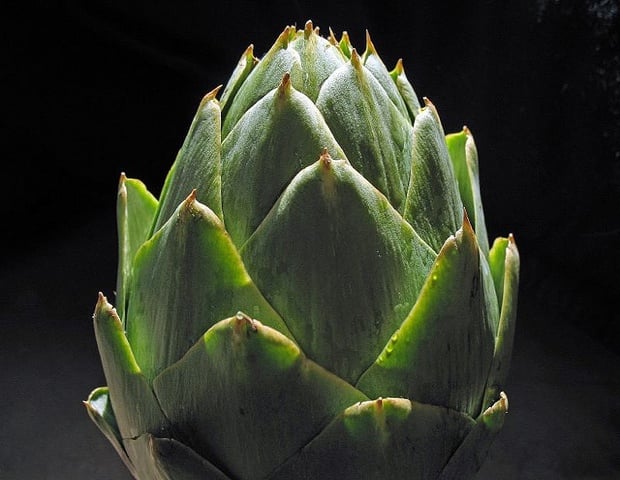Artichokes don’t exactly make everyone’s list of favorite foods. Those trying to eat healthy probably avoid the traditionally fat-and-calorie-laden spinach-artichoke dip, and fresh artichokes look a little intimidating, with their tightly closed and thorny petals that keep us from easily accessing the most popular part: the heart.
However, artichokes are extremely versatile and packed with nutrients, says Nour Zibdeh, MS RD, a nutrition coach in Northern Virginia. They’re an excellent source of fiber—a medium artichoke contains 10 grams, almost half of the 25 grams recommended for women under 50.
In addition, artichokes contain polyphenols, which are disease-fighting compounds. They’re also a treasure trove of anti-inflammatory antioxidants. A 2004 study by the US Department of Agriculture found that artichokes were one of the top vegetables in terms of total antioxidant levels. They also contain vitamins C and K, magnesium, potassium, and folate.
Unfortunately, we miss some of artichoke’s main nutrients when we ignore the petals and only eat the hearts. In fact, many of the studies purporting the health benefits of artichokes, including the ability to lower cholesterol and relieve gastrointestinal problems, focus on artichoke leaf extract. It’s still possible to get plenty of nutrients from the hearts, but Zibdeh says artichokes as a whole should not be wasted.
Read on for tips on how to choose, prepare, and cook artichokes.
How to choose: March to May is the best time to buy fresh artichokes. When buying fresh, Zibdeh says to look for ones that are heavy and firm, with compact, bright green leaves. Make sure there are no signs of dryness. Artichoke hearts also come jarred or canned, but Zibdeh cautions to note the sodium content first.
How to store: Zibdeh recommends following Ocean Mist’s storage technique: Slice a dime width off the artichoke stem and sprinkle the raw vegetable with water. Refrigerate in an airtight plastic bag. It’s best to use them within five to seven days of purchasing.
How to prepare: This is the intimidating part, especially for those who have never attempted to cook a fresh artichoke. Rinse and gently scrub the artichoke with water. Using a serrated knife, cut off the bottom stem and about half an inch from the top. (Optional: Using scissors, cut off the tips of the leaves to get rid of the thorns) Rubbing the cut portions of the artichoke with a slice of lemon can keep it from browning while cooking.)
If you plan to cook the entire artichoke, consider opening the leaves a bit to leave room for any seasonings you might want to include.
Don’t want to use the whole vegetable? To get to the heart, pick off the petals. Zibdeh says you can scrape off the fleshy part of each petal with your teeth, but discard the tough part. The cooked petals are “an excellent appetizer with dip, especially for kids as a pre-dinner snack.”
How to cook: Steaming artichokes for 30 to 40 minutes is the easiest way to cook them, says Zibdeh. They’re also often grilled, baked, or boiled. The hearts can be added to pasta, salads, and dips.
Recipes to try:
Nour Zibdeh’s Artichoke Basil Pasta Salad
Light Spinach-and-Artichoke Dip (Zibdeh recommends serving it with carrots, celery, or bell peppers instead of bread or crackers.)
Artichoke Dip With Plain Yogurt
Follow Nour Zibdeh on Twitter at @NourRD, find her on Facebook, or contact her via her website, NOURition.

















